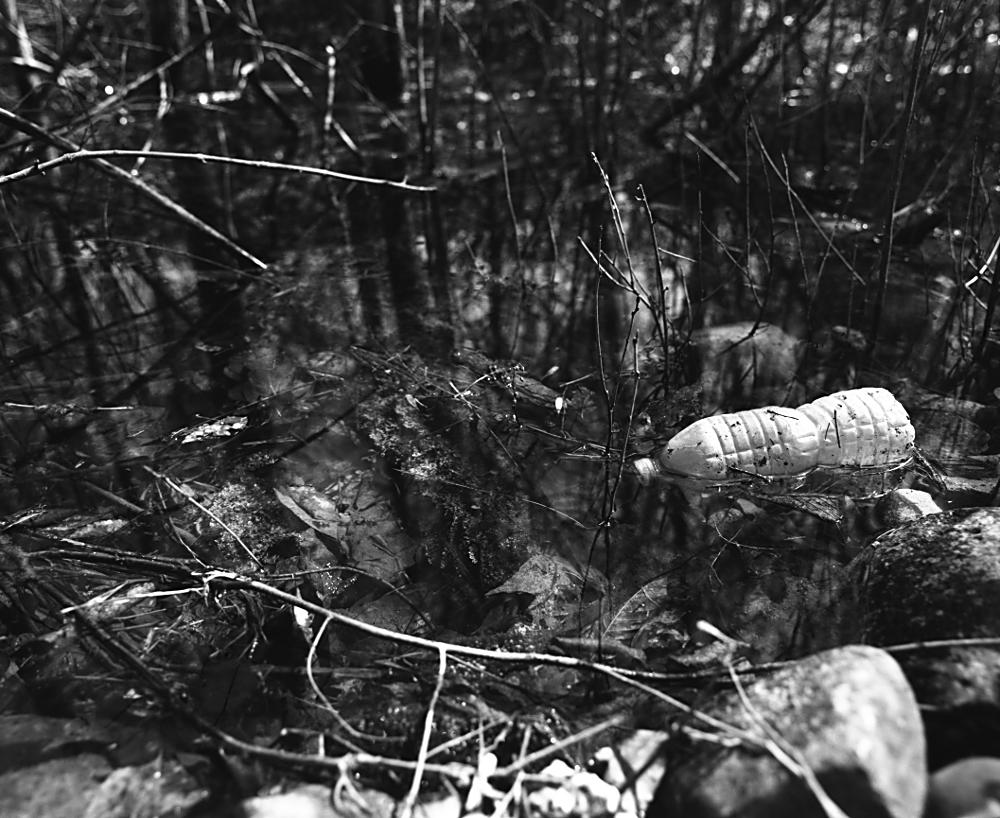
A water bottle found on an otherwise enjoyable hike through Saw Wee Kee Park of Oswego, IL, USA. Though I’ve used my work to speak against littering in Garbage Along the Freeway, this bottle’s age and near-ruined appearance compelled me to revisit the subject. Its stark contrast with the puddle and saplings, and its being as firmly lodged as the stones proved that it had not fallen recently – that it easily withstood the elements, insects, and wildlife that would normally promote decomposition.
And yet, for however long it has stayed there, other hikers saw it and continued on – leaving it because it wasn’t theirs to remove, because they were short on time, or because they saw such a small amount of litter as acceptable. I confidently say it was seen because, unlike most litter found on preserves, litter which rests on the forest floor or on obscure and challenging trails, this was within stepping distance of a main trail.
Left alone, this plastic would take centuries to break down. In so doing, its chemical constituents would leech into the ground, combine with the ground water, and return to us through water drank or absorbed through the skin. This process of bioaccumulation seems harmless, but leads to numerous health complications over time, of which children and the elderly suffer from more quickly and severely.
We owe water and land preserved from reckless, thoughtless contamination to future generations. We owe ourselves a sense of responsibility for the immense, lasting consequences that can arise from the most seemingly harmless of actions.
If you’re able, I ask that you strive to clean litter at some practical time after it’s found. Tolerating the selfish, foolish, and cowardly action of littering saps the focus needed to take action, and does nothing but distort what amount of litter is found acceptable (which in turn pushes the boundaries of toleration).
Mamiya RB 67 Pro-S
Mamiya 50mm f/4.5 C
Fuji Neopan Acros – ISO 100 – 6×7
